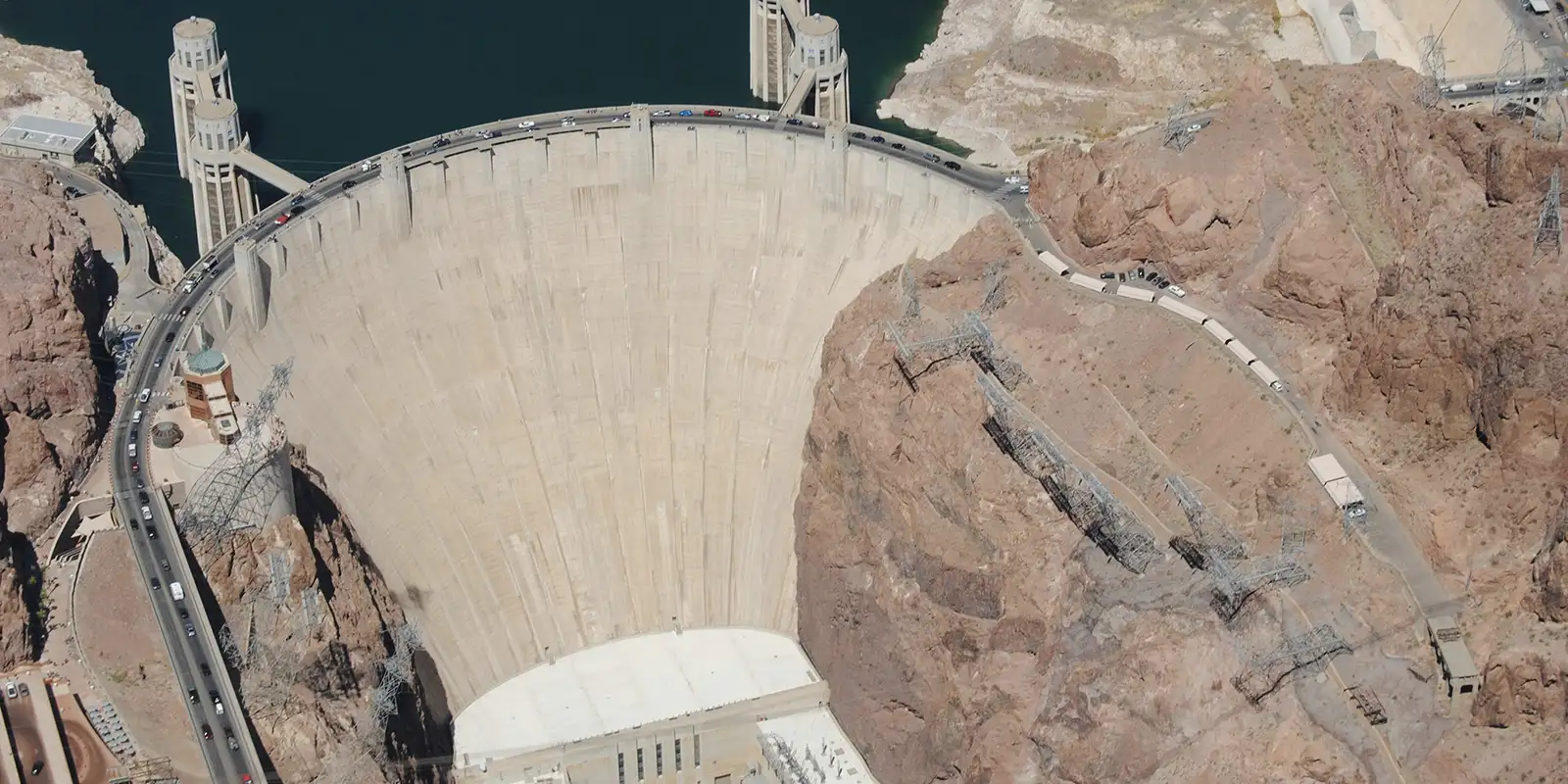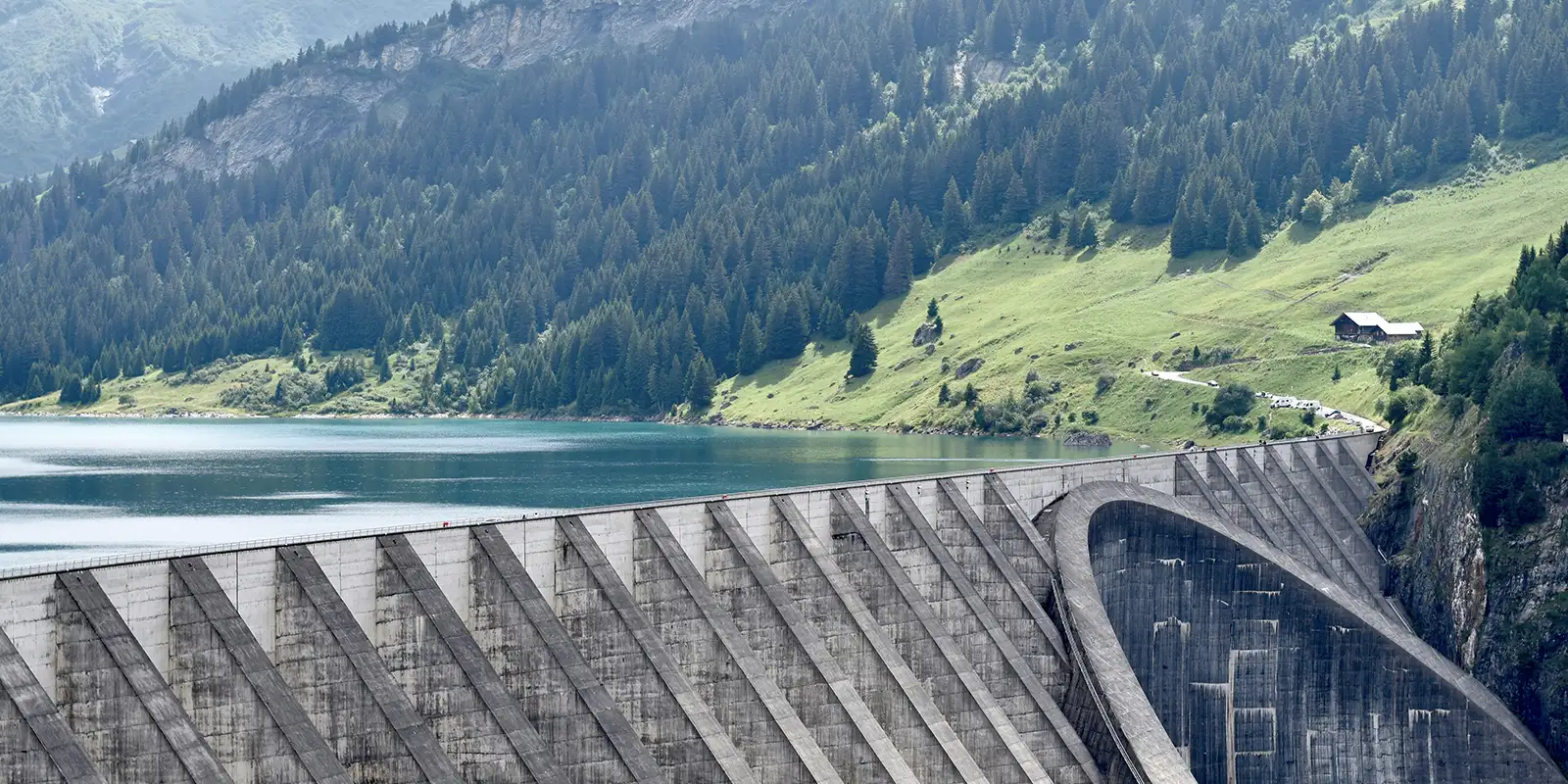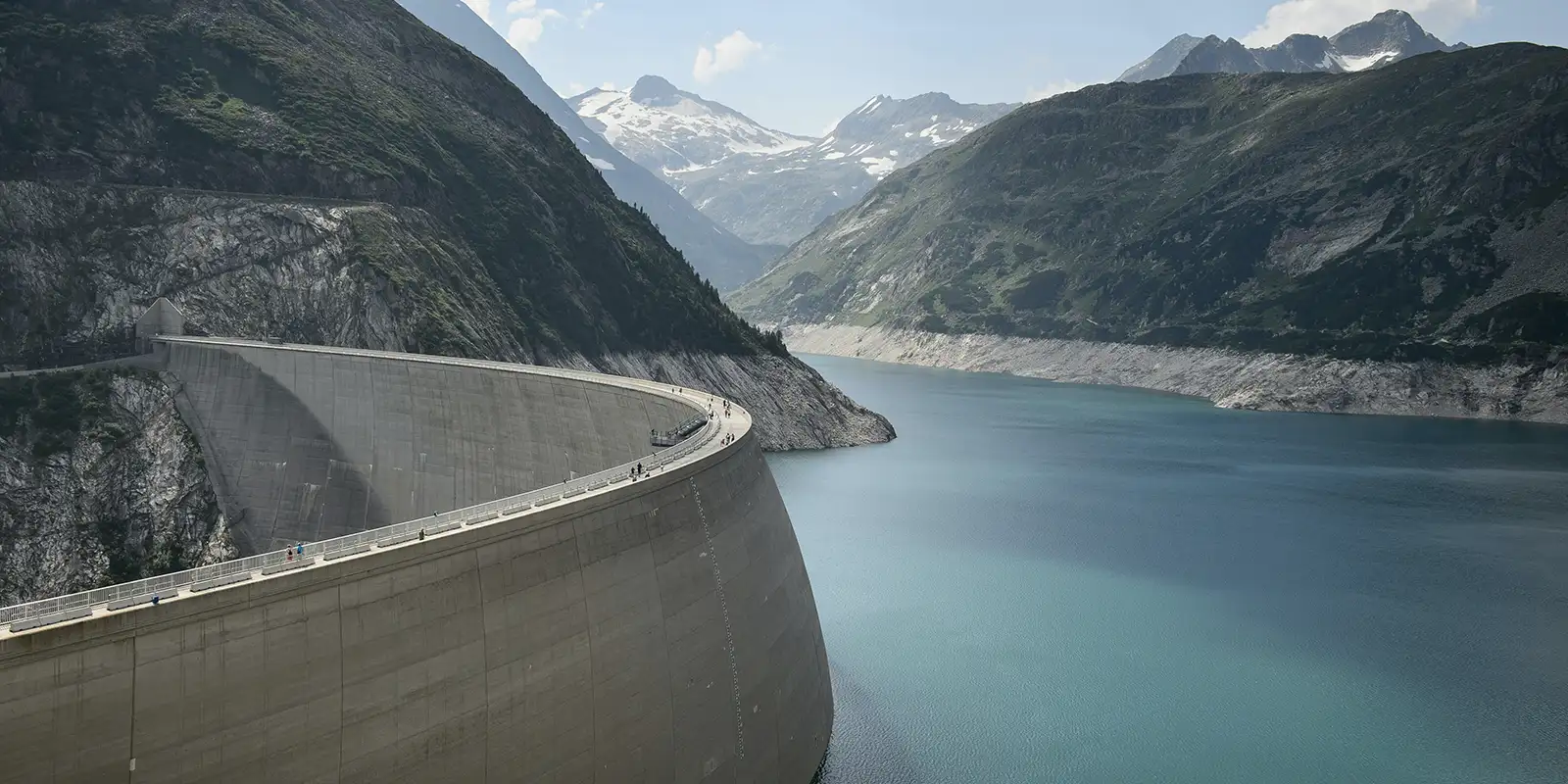To get a sense of how a lake dam works, imagine it as a giant water manager with a serious mission! Dams are built to master the art of controlling water flow in lakes and reservoirs, serving all sorts of purposes from water supply to flood prevention, and producing electricity. Picture a huge, sturdy barrier holding back water, creating a vast reservoir that can let water trickle through carefully controlled outlets or spillways.
The key players in these water management systems include the embankment (the rock-solid wall holding the water in place), spillways (the safety valves that let excess water flow out when Mother Nature decides to be extra generous), and outlet systems that help guide water downstream at the right times. When you add a hydroelectric twist, this controlled water flow is like the energy source for a power plant, producing electricity that can power everything from your neighborhood lights to entire cities.
And while we often think of dams as electricity-making giants, only 3% of U.S. dams are hydroelectric. The non-electric dams? They are still fascinating and use the same water-regulating techniques without the flashy power production. This article dives into the world of both power-producing and non-electric dams because these life-giving water giants deserve a little appreciation for their engineering magic!
How Do They Stop The Water When Building a Dam?
This is an interesting question because the answer rests on whether the water barrier structure is to be constructed on an existing lake or reservoir, is going to create a reservoir, if the dam is built on a river of stream, or if the water barrier’s purpose is a levee.
Engineering outfits typically use six methods after the site preparation to divert or remove water when they construct a dam of levee. Engineers do not utilize all these methods are for each location of a dam or levee. At a future dam site, the terrain, type of water flow or body, and the climate determine the methods used to keep the site dry and workers safe.
- Site Preparation: Before construction, engineers evaluate the lake’s water flow and levels, preparing a detailed plan to manage the water effectively. Construction of access points, staging areas, and temporary infrastructure takes place.
- Cofferdams: Temporary barriers, called cofferdams, are built to block off sections of the lake where the dam will be constructed. Cofferdams are often made from earth, rock, or sheet metal and are designed to keep the construction area dry by isolating it from the rest of the lake.
- Water Diversion: Water is diverted around or away from the construction zone using pumps, diversion channels, or pipes.
- Lower Water Levels: In some cases, water levels in the lake are lowered beforehand through controlled draining to make it easier to manage the flow during construction.
- Diversion Channels or Tunnels: Water is redirected using diversion channels or tunnels excavated alongside the riverbed. These pathways safely carry the river’s flow away from the construction site. Diversion channels may be open-air paths, while tunnels are typically drilled through nearby hills or rock formations.
- Pumping Systems: Any water that seeps into the construction site is continuously pumped out to maintain dry conditions for workers and machinery.
- Foundation Work: Once the site is dry, excavation begins to prepare the foundation for the dam. This often involves laying concrete and reinforcing the area to handle the pressure of the water once the dam is operational.

How Does Water Go Through a Dam?
Water Through Hydroelectric Dams
A hydroelectric dam operates on the principles of potential and kinetic energy. Water stored in a dam’s reservoir represents potential energy because of its height above the turbine. When released, gravity causes the water to flow through the penstock at high pressure, converting potential energy into kinetic energy.
The kinetic energy spins a turbine, which is connected to a generator. Inside the generator, the movement of the turbine’s rotor within a magnetic field produces alternating current (AC) electricity through electromagnetic induction. The generated power increases via the transformers and is sent via transmission lines for distribution.
Water Through Non-Electric Dams
Non-electric dams rely on gravity, water pressure, and mechanical systems, like gates and valves, to regulate water flow. Water moves through a non-electric dam primarily through controlled passageways designed to regulate flow and prevent flooding. Water typically moves through non-electric dams with different structures and mechanical components.
- Spillways
- Purpose: Spillways allow excess water to flow safely downstream, especially during high rainfall or flooding. They prevent the reservoir from overflowing and damaging the dam structure.
- Operation: Gates or open chutes control the amount of water released. Some spillways are always open, while others operate only during peak flows.
- Outlet Works
- Purpose: Outlet works provide a controlled way to release water from the reservoir for downstream needs like irrigation or maintaining river ecosystems.
- Operation: These systems include tunnels or pipes that pass through the dam, often equipped with valves or gates to control flow rates.
- Sluice Gates
- Purpose: Sluice gates are openings near the dam’s base used to discharge sediment-laden water or manage water levels.
- Operation: By adjusting the gates, operators can control the water’s flow and velocity.
- Navigation Locks (if applicable)
- Some non-electric dams include locks for ships and boats to pass between different water levels upstream and downstream of the dam.
- Natural Seepage
- While not a designed feature, small amounts of water can seep through or under a dam. Engineers monitor and manage this seepage to ensure structural safety.

Is Water Behind a Dam Moving?
The water behind a dam is rarely completely still. It is influenced by natural factors, controlled releases, and structural seepage. Dams are designed to manage these movements carefully to ensure stability, safety, and efficiency in water use.
Water Flow in the Reservoir
Natural Movement: Water in a reservoir behind a dam is not stagnant; it experiences movement due to natural processes such as wind, temperature differences, and the input of tributary streams and rivers. This helps prevent sedimentation and maintains water quality.
Seasonal and Weather Influences: Changes in weather conditions, like rainfall, snowmelt, or strong winds, can cause variations in water movement, creating currents and mixing within the reservoir.
Controlled Water Release
Outlet Works and Spillways: Water can be deliberately moved through the dam via outlet works or spillways. These structures are designed to control the water level and flow, particularly during heavy rainfall or when the reservoir reaches capacity.
Gate Operations: The dam’s gates can be opened or closed to regulate the flow, moving water downstream in a controlled manner. This helps manage downstream water levels and supports uses like irrigation or hydroelectric power generation. Even if the dam is non-electric, the flow control can still be significant.
Seepage and Leakage
Gradual Movement: Water can seep through the dam or beneath it, especially if the structure is not entirely impermeable. While this movement is generally minimal, engineers monitor seepage to ensure the dam’s integrity.
Pressure-Driven Flow: Water pressure behind the dam can force it through small openings or cracks in the structure, contributing to the overall movement of water.
Water Exchange with the River Below
Flow Regulation: In cases where the dam is designed to release water for environmental reasons or for maintaining river flow downstream, the water behind the dam moves through the dam in controlled bursts or steady streams.
Non-Electrical Components of Hydroelectric Dams
Dam Structure: The main barrier that holds back water to create a reservoir. This is typically made of concrete or earth and is built to withstand the pressure exerted by the water.
Reservoir: The large body of water stored behind the dam, created by the dam structure. This water is the source of potential energy.
Spillway: A structure designed to safely release excess water from the reservoir during periods of heavy rain or melting snow to prevent the dam from overflowing or breaking.
Intake: An opening at the base of the dam that allows water to flow into the penstock.
Penstock: A large pipe that directs the flow of water from the intake to the turbines. The pressure and speed of the water as it travels through the penstock generate kinetic energy.
Turbine: A rotating machine that converts the energy of the flowing water into mechanical energy. The water strikes the blades of the turbine, causing it to spin.
Powerhouse: The building that houses the turbines and generators. This is
Tailrace: The channel that carries water away from the turbines and releases it back into the river or downstream environment.
Control System: The infrastructure used to regulate water flow, manage the turbines, and control the output of the electrical generators. This system ensures optimal performance and safety.
Electrical Components of a Hydroelectric Dam
These components collectively ensure that electricity is generated efficiently and safely delivered to the grid. For further reading, resources like the U.S. Department of Energy or educational platforms like IEEE offer detailed insights into the electrical systems in hydroelectric plants.
Generator: Connected to the turbine, the generator converts the mechanical energy from the turbine into electrical energy using electromagnetic induction.
Exciter: Provides the initial magnetic field for the generator’s rotor to produce electricity. This component regulates the generator’s voltage output.
Transformers: Increase (step-up) or decrease (step-down) the voltage of the electricity generated to make it suitable for transmission or distribution.
Control Systems: Includes electrical circuits, sensors, and software that monitor and regulate the performance of turbines, generators, and other systems to ensure efficiency and safety.
Circuit Breakers and Switchgear: Protect electrical systems by interrupting power flow during faults or overloads. They also allow for controlled isolation of electrical components during maintenance.
Transmission Lines: Carry the generated electricity from the dam to substations, where it is further distributed to consumers.
Instrumentation and Monitoring Systems: Include devices such as voltmeters, ammeters, and power factor meters that monitor the performance of the electrical systems.
Auxiliary Power Systems: Provide power for the dam’s internal operations, such as lighting, control room systems, and backup power supplies.
Busbars: Conductors that collect electricity from multiple generators and distribute it to the transformers and transmission systems.
Rectifiers and Inverters (if needed): In some cases, rectifiers convert alternating current (AC) to direct current (DC), or inverters convert DC back to AC, depending on the grid requirements.







